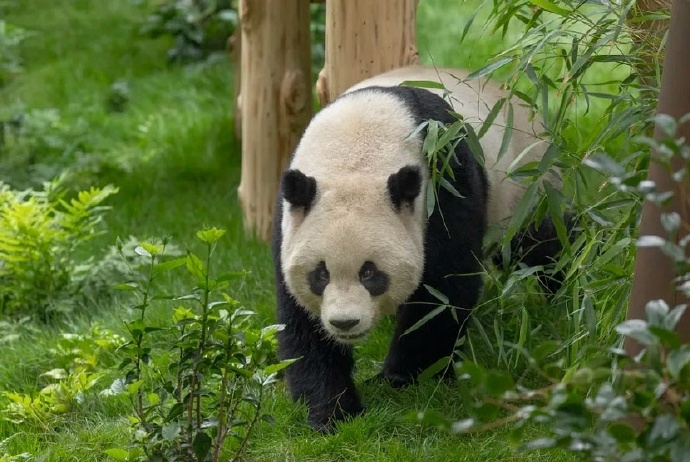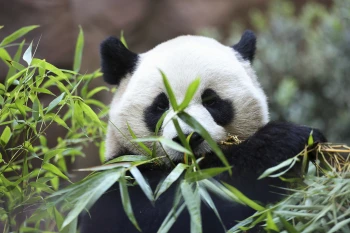On August 8, 2024, the San Diego Zoo became the epicenter of a momentous cultural and ecological event, as it unveiled its newest residents: two giant pandas, Yun Chuan and Xin Bao.
This occasion, attended by California Governor Gavin Newsom and a host of media representatives, was not merely a celebration of the arrival of these charismatic creatures; it was a reaffirmation of the historical and diplomatic ties between the United States and China, encapsulated in the practice known as “panda diplomacy.”
The event, which drew significant public attention and media coverage, underscores the multifaceted implications of such exchanges, extending beyond mere zoological interests to encompass themes of conservation, cultural exchange, and international relations.
Panda diplomacy traces its roots back to the early 1970s, a period marked by a thawing of relations between the United States and China.
In 1972, the Chinese government gifted a pair of giant pandas to the National Zoo in Washington, D.C., symbolizing a new chapter in Sino-American relations.
This act of goodwill was not merely a gesture of friendship; it served as a strategic tool for fostering diplomatic ties and enhancing cultural understanding between the two nations.
Over the years, the practice evolved, with China loaning pandas to various zoos around the world, thereby reinforcing its image as a benevolent global player while simultaneously raising awareness about wildlife conservation.
However, the landscape of panda diplomacy has shifted in recent years, particularly as geopolitical tensions have escalated.
The Chinese government has increasingly opted to recall pandas from Western zoos, signaling a potential retreat from this long-standing tradition of animal diplomacy.
The departure of the San Diego Zoo’s previous pandas in 2018 and 2019 heightened concerns that this era was coming to an end.
Yet, the announcement in February 2024 by the China Wildlife Conservation Association that it would send two pandas to San Diego revived hopes for the continuation of this unique form of diplomacy.
The return of pandas to the San Diego Zoo not only reestablishes a vital cultural connection but also symbolizes a renewed commitment to conservation efforts.
The opening ceremony for the pandas was more than just a public relations event; it was a celebration of shared values and common humanity.
Governor Newsom aptly articulated this sentiment, stating, “This is about something much deeper, much richer, than just the two beautiful pandas we celebrate.”
His proclamation of August 8 as California Panda Day serves as a reminder that the significance of these animals extends beyond their physical presence in the zoo. They are, in essence, ambassadors of goodwill, fostering dialogue and understanding between two nations.
The remarks made by Chinese Ambassador Xie Feng further emphasized the importance of this cultural exchange.
His lighthearted anecdote about young fans proposing to trade grizzly bears for pandas illustrates the deep affection and interest that these animals inspire across cultures.
Such moments of levity serve to bridge the gap between nations, reminding us that at the core of international relations lies a shared appreciation for the natural world.
The arrival of Yun Chuan and Xin Bao at the San Diego Zoo is also a significant milestone in conservation efforts for giant pandas, a species that has long been classified as vulnerable.
The cooperative conservation program established between the San Diego Zoo and China represents a proactive approach to wildlife preservation, addressing the challenges faced by pandas in their natural habitat.
The financial contributions made by U.S. zoos, typically amounting to $1 million annually, support China’s efforts in wildlife conservation, thereby creating a mutually beneficial relationship.
The zoo’s commitment to these pandas is evident in its meticulous efforts to ensure their acclimatization to their new environment.
Both Yun Chuan and Xin Bao were born at the Wolong Shenshuping Panda Base in Sichuan province, China, and their transition to the San Diego Zoo marks a new chapter in their lives.
The zoo’s description of Yun Chuan as “mild-mannered, gentle, and lovable,” and Xin Bao as a “gentle and witty introvert” not only highlights their individual personalities but also reinforces the emotional connection that humans can forge with these animals.
During a ceremonial event reflecting the rich cultural ties between China and California, Ambassador Xie eloquently stated that the name of the newly arrived panda signifies a treasure of prosperity and abundance, a hopeful sentiment that resonates well with the aspirations of the local community for good fortune.
The ambassador further elaborated on the robust economic relationship that exists between China and California, identifying China as the state’s foremost trading partner.
Additionally, he highlighted the significant presence of a large Chinese community and the influx of Chinese tourists, emphasizing the importance of these connections in fostering cultural and economic exchanges.
The occasion drew attention from various enthusiastic attendees, notably two young children adorned in “Panda Ridge” T-shirts, joyfully clutching plush panda toys, a clear testament to the adoration the species garners among the youth.
Their father, James Metz, expressed pride in his daughter’s fascination with pandas, embellishing the narrative with the detail of her birthday, thereby rendering the day exceptionally memorable for their family.
In anticipation of the panda’s arrival, the Metz family had devoted weeks to watching live feeds from China, underscoring their excitement for the bears.
Upon arrival, the pandas, Yun Chuan and Xin Bao, were observed contentedly winding down after a meal, a charming sight for those present.
Furthermore, the event culminated with the unveiling of a portrait of one of the pandas’ grandmothers, a beloved resident of the zoo for over two decades, an artwork created by the renowned California artist Shepard Fairey,.

celebrated for his iconic “Hope” imagery from President Barack Obama’s 2008 campaign, thereby intertwining the themes of legacy and continuity in the appreciation of these cherished creatures.
The debut of the giant pandas at the San Diego Zoo is a poignant reminder of the intricate tapestry of international relations, cultural exchange, and conservation efforts.
As these two pandas settle into their new home, they carry with them the weight of historical significance and the promise of future cooperation between the United States and China.
The event serves as a celebration of not only the beauty of these magnificent creatures but also the enduring bonds that unite humanity in the pursuit of understanding, friendship, and ecological stewardship.
In a world increasingly marked by division, the arrival of Yun Chuan and Xin Bao stands as a testament to the power of diplomacy, compassion, and shared responsibility for the natural world.
